The comfrey shrub has been prized for its traditional medicinal benefits for more than 2,000 years. Today, clinical studies are investigating the specific ways this plant’s active compounds affect your body.
People have used the comfrey plant (Symphytum spp.) as an herbal medicine for thousands of years. Some of the earliest written mentions of it appear in physicians’ notebooks from ancient Greece. And now, modern scientists are beginning to investigate the specific compounds in comfrey that give it its potent medicinal effects.

The Origins of Comfrey
Comfrey is a flowering shrub native to Eurasia.
Early colonial settlers transported it across the Atlantic several centuries ago. By the 18th century, the Indigenous peoples of North America were using comfrey as an herbal medicine to treat various health concerns, including digestive and reproductive issues.
You’ll find comfrey growing in moist, shaded grasslands and river banks. Depending on where you live, the comfrey plant may also go by other names, including:
- Blackwort
- Boneset
- Slippery-root
- Knitbone
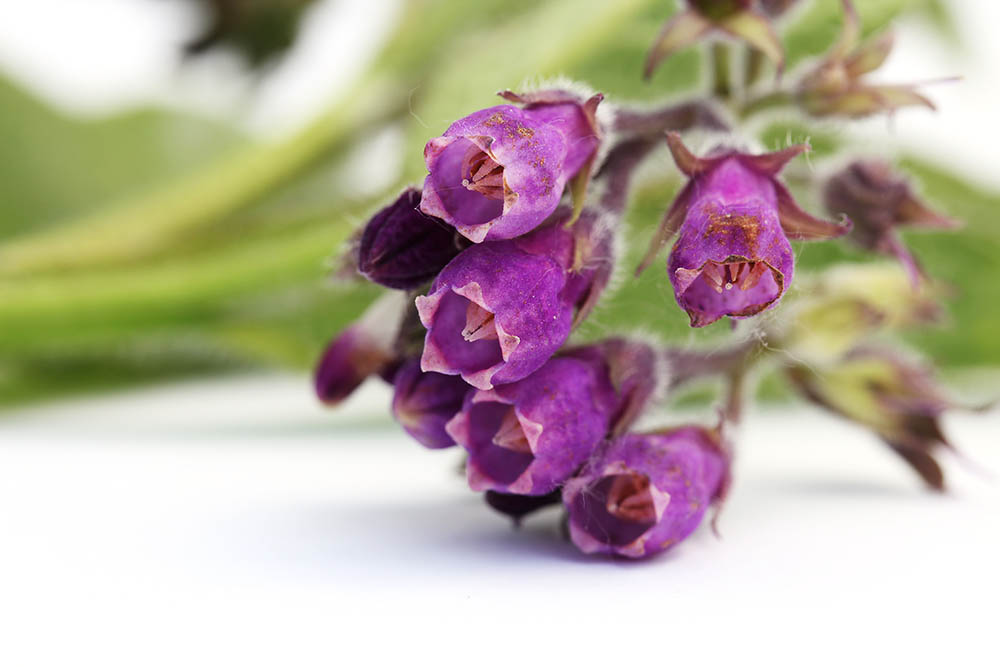
Comfrey Has a Long History in Traditional Medicine
It’s no accident that some of comfrey’s alternative names include “knitbone” and “boneset.”
One of the plant’s most widespread medicinal uses, both historically and in more recent times, is to treat bone and joint issues:
- Broken bones and bone fractures
- Arthritis
- Back pain
- Sprains and strains
Comfrey is also popular in traditional medicine for ailments such as:
- Organ health concerns, such as gastritis (stomach inflammation), liver problems and ulcers
- Skin problems, such as insect bites and even signs of ageing
- Wound healing
- And more
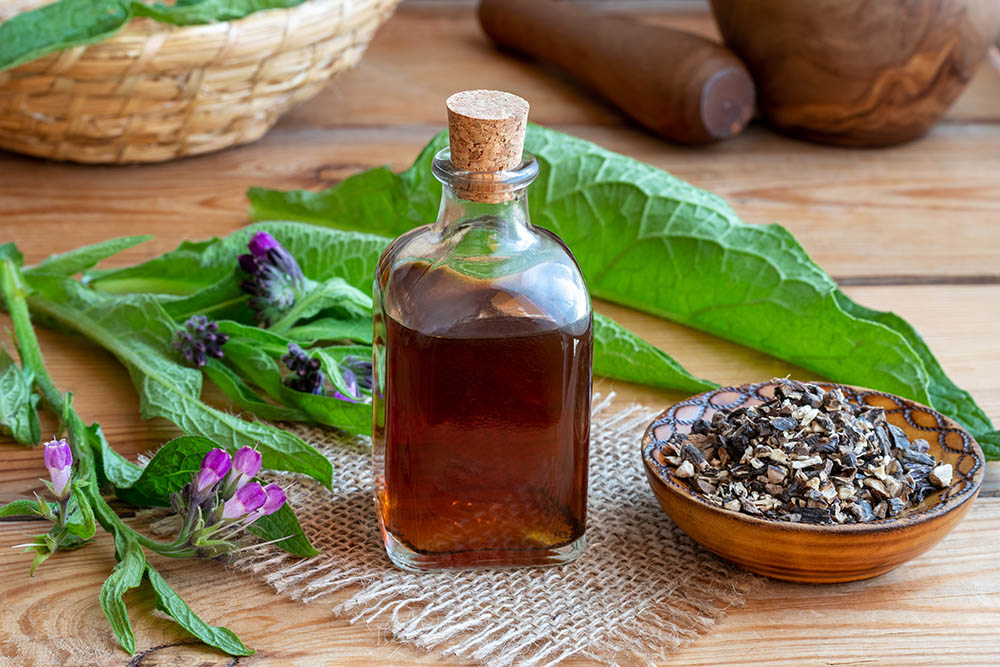
Comfrey May Speed Up Wound Recovery
Traditional medicinal applications of comfrey are seemingly endless, but modern clinical trials have specifically honed in on comfrey’s effectiveness in a handful of key areas.
Wound healing is one of them.
Comfrey is very high in rosmarinic acid (RA) and salvianolic acid. These compounds have very high antioxidant and anti-inflammatory activities. This may improve healing and recovery from wounds.
Traditional healers have often used comfrey as a poultice when bandaging injuries. One study found that applying comfrey to wounds shortened total healing time by almost three days.
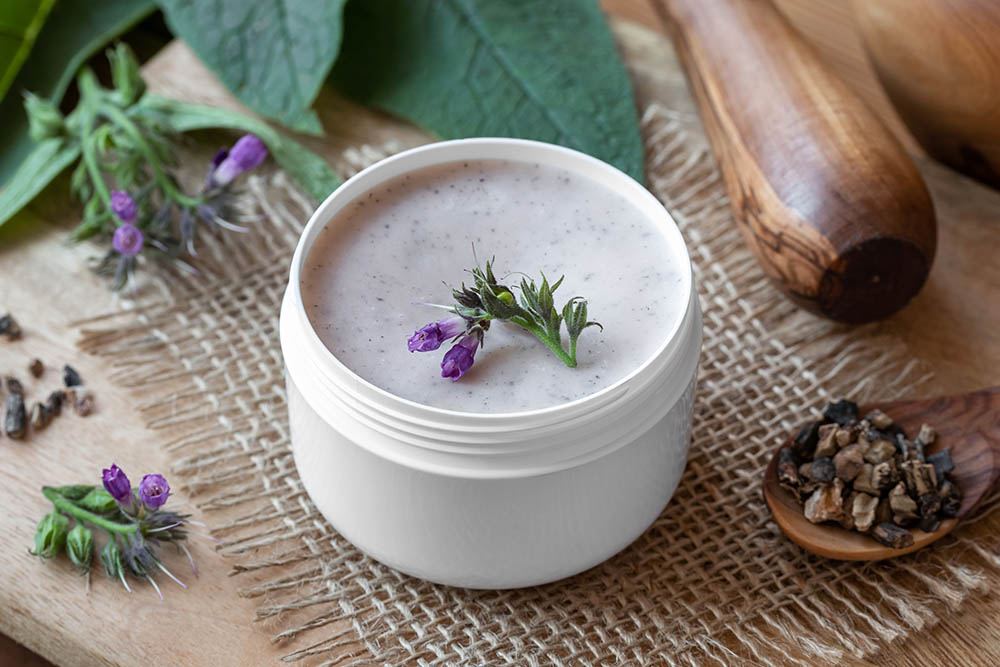
Comfrey May Improve Injury Recovery in Children
Kids love to play, but playtime isn’t without its risk. Nearly half of all sports-related injuries occur in young children.
Comfrey may work as a potent, natural recovery aid for injured kids.
When used in a cream, comfrey significantly reduced pain and helped restore mobility in children ages 4 to 12. There were also no reported adverse side effects in this study.
However, experts warn that more research needs to be done, specifically on the short-term and long-term effects on young children.
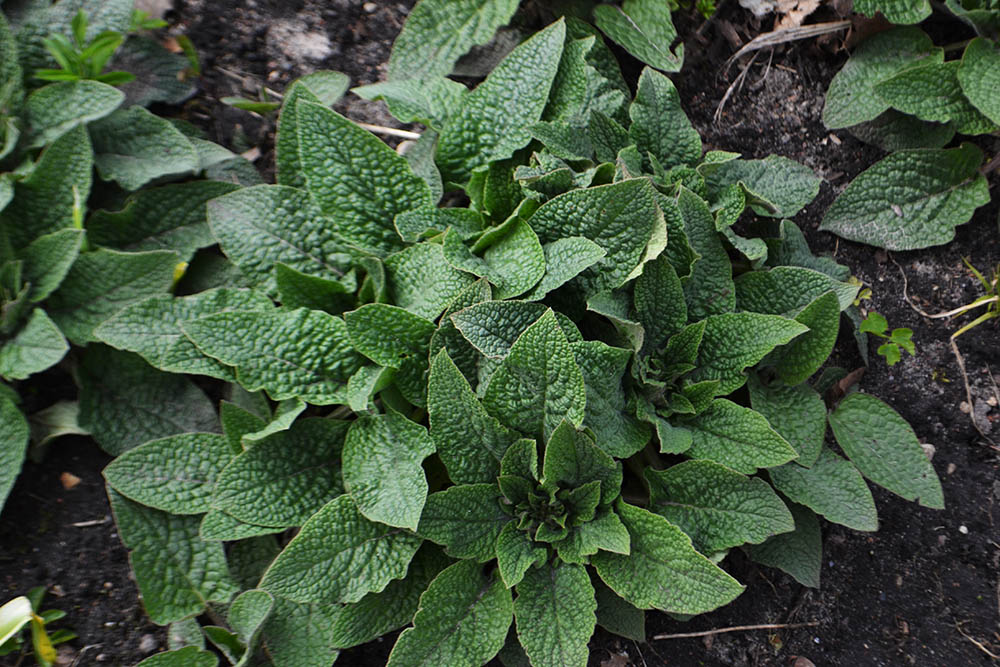
Comfrey May Support Joint and Bone Health
Arthritis affects more than one in four adults, according to the Arthritis Foundation.
Numerous studies have researched the traditional use of comfrey for joint and bone health, and found that topical applications may:
- Reduce joint stiffness
- Reduce joint pain
- Improve mobility
- Restore daily function compromised by arthritis and joint health problems
In some studies, comfrey also outperformed other natural joint health remedies, such as topical use of essential oils.
Inflammation lies at the heart of many joint problems. Comfrey’s effectiveness may be due to the plant’s active compounds that reduce inflammation.

Comfrey May Soothe Muscle Pain
Clinical trials report that comfrey significantly reduces chronic and acute muscle pain, outperforming placebos and other remedies in several different studies.
It has specifically been shown to help with:
- Muscle swelling
- Muscle pain
- Pulled and strained muscles
One of the more well-researched areas of interest is lower back pain. Seven out of 10 adults will experience low back pain at some point in their lives, with muscle sprains and strains ranking as the most common triggers for back pain.
Numerous studies suggest that comfrey effectively manages back pain by soothing these muscle sprains and strains.

Active Ingredients in Comfrey
The exact reasons why comfrey works so effectively remains a mystery.
“Comfrey constitutes a traditional medicinal plant with a long-standing therapeutic history,” reports a recent study published in the Frontiers in Pharmacology journal. “Today, its topical use is based on its analgesic and anti-inflammatory effects, which have been substantiated by modern clinical trials. However, the molecular basis of its action remained elusive.”
More research needs to be done. However, scientists currently think the plant’s medicinal properties come from compounds and chemicals like:
- Allantoin, which improves cell division (this may assist in wound and injury recovery)
- Phenolic acids that work as potent antioxidants
- Chemicals that impair the inflammatory process
- Chemicals that inhibit the growth of pathogens
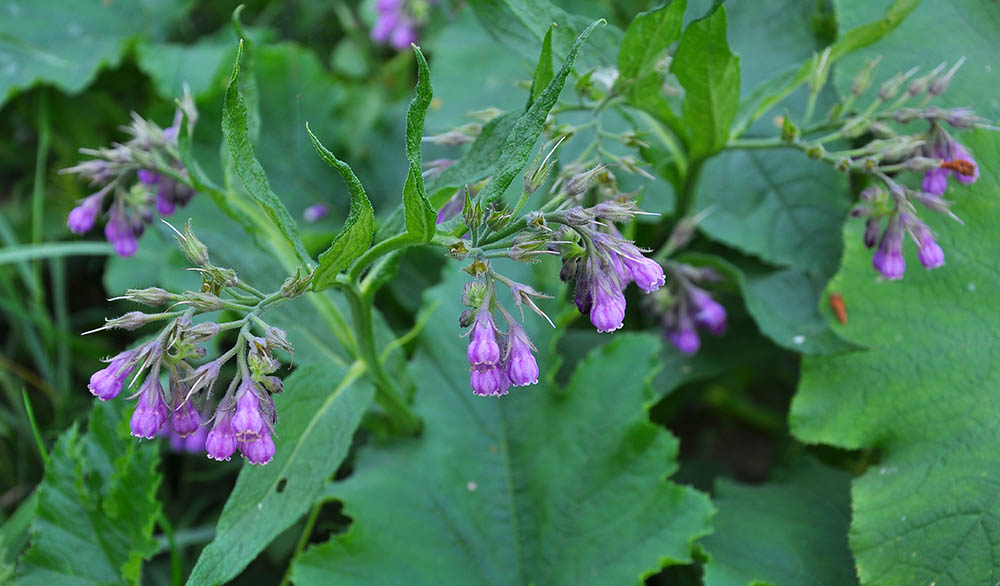
How to Use Comfrey: Common Ways the Plant is Used
The comfrey plant’s roots, stems and leaves are all used in herbal medicine. You can typically find comfrey in products such as:
- Creams
- Salves
- Ointments
- Lotions
Apply these comfrey products according to the labelled instructions, since different manufacturers will incorporate different concentrations of comfrey’s active ingredients.
In the past, comfrey was also used orally, both as an oral supplement and even as a mouth rinse or gargle. However, internal usage raises significant safety concerns and should be avoided.
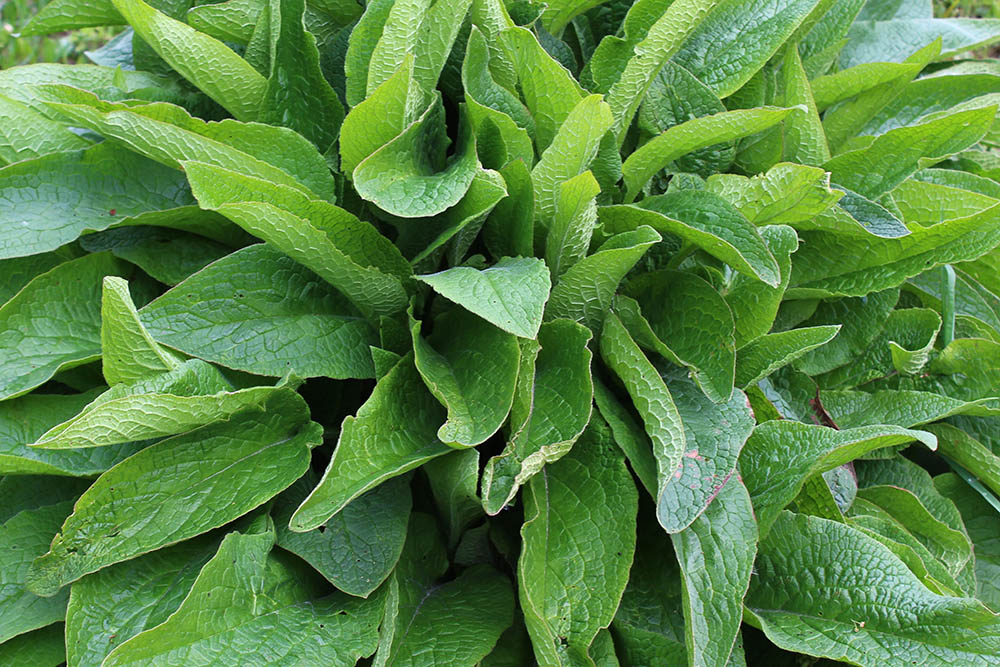
Comfrey Safety Risks and Concerns
Comfrey is very high in many different types of pyrrolizidine alkaloids. These alkaloids are very toxic when ingested.
In humans and animals, consumption of comfrey has been linked to increased risks of:
- Cancer
- Liver health problems
- Lung health problems
Other potential side effects from taking comfrey tea, capsules and other oral applications include:
- Abdominal pain
- Nausea
- Fatigue
- Diarrhea
For these reasons, comfrey should only be used topically (and never on open wounds). You should also avoid taking it orally.
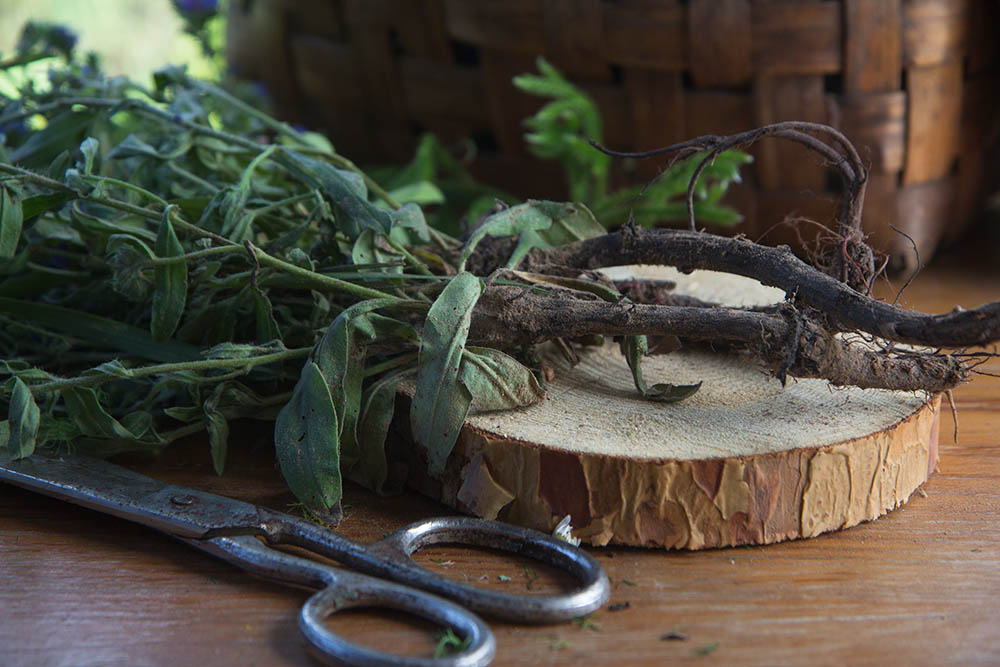
Should You Use Comfrey?
The latest studies back up what traditional medicinal experts have known for centuries: Comfrey may be an effective and natural treatment for many health concerns.
But just because it’s natural doesn’t mean it’s completely harmless.
Talk to your doctor before trying comfrey. Studies are ongoing, and research is still unclear on how some of the plant’s compounds might interact or interfere with other natural treatments, supplements or medications you’re using.


